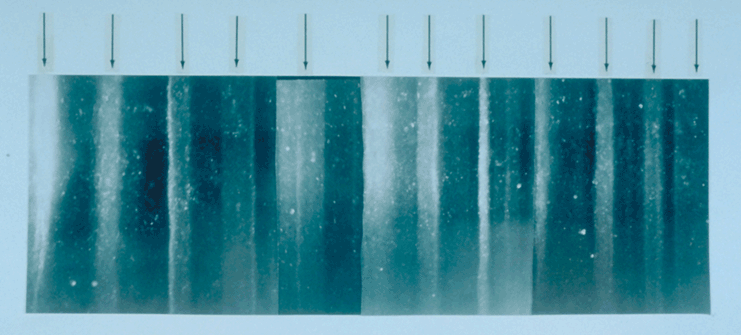Proxy climate data is an indirect measure or estimate of what the climate was like by indirect measurements (not with a thermometer or other instrument). Most proxy data substitutes for direct data that predates accurate temperature measurements either locally or globally.
Direct measurements date back to the invention of reliable thermometers. Countries with strong naval histories tend to be the earliest recordings of weather and temperature. Accurate thermometers became available in the 18th century.
There are 2 ways historical climate can be determined. The first way is by accessing tree rings. This type of proxy data is useful for looking at local climates in terms of either temperature or rainfall patterns. The dark regions or rings are usually associated with winter growth with the light ones being summer growth. A large gap between dark rings indicates good growing conditions while narrow gaps indicate poorer growing conditions.

Ice core sampling produces alternating light (summer snowfall) and dark (winter snowfall) bands. The thickness of the layers is a good indicator of temperature. In addition, gas bubbles trapped in the layers can be extracted and tested to see what the atmosphere was like at the time of deposition.

This has led to some alarm owing to the rapid rise of CO2, a result of burning fossil fuels for just over 200 years. When CO2 levels and estimated temperatures are compared, there appears to be a strong link. The spike in CO2 in recent times is unprecedented for the last 500,000 years. This is causing considerable debate now as groups argue for and against the link of CO2 and global warming.

No comments:
Post a Comment